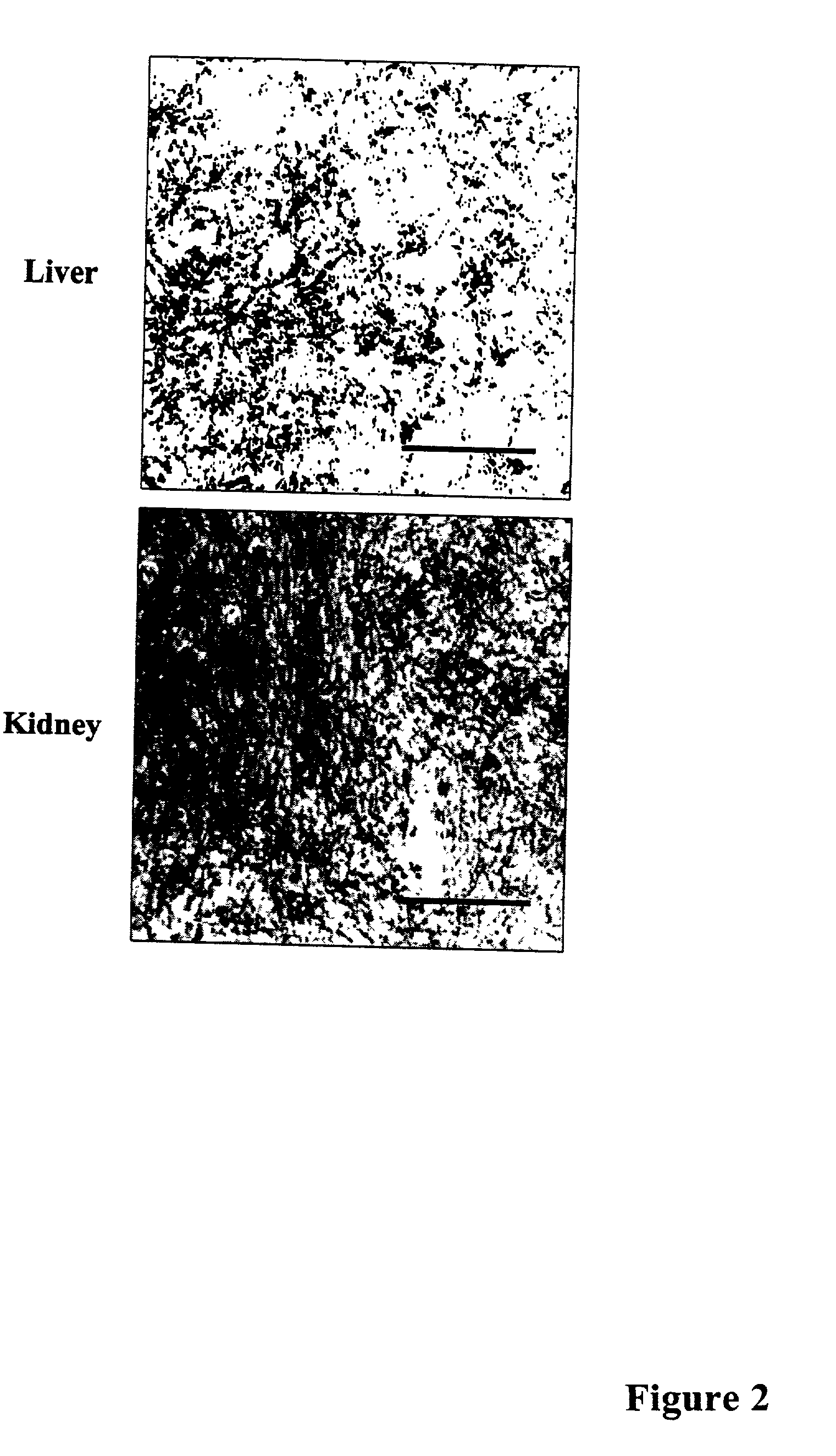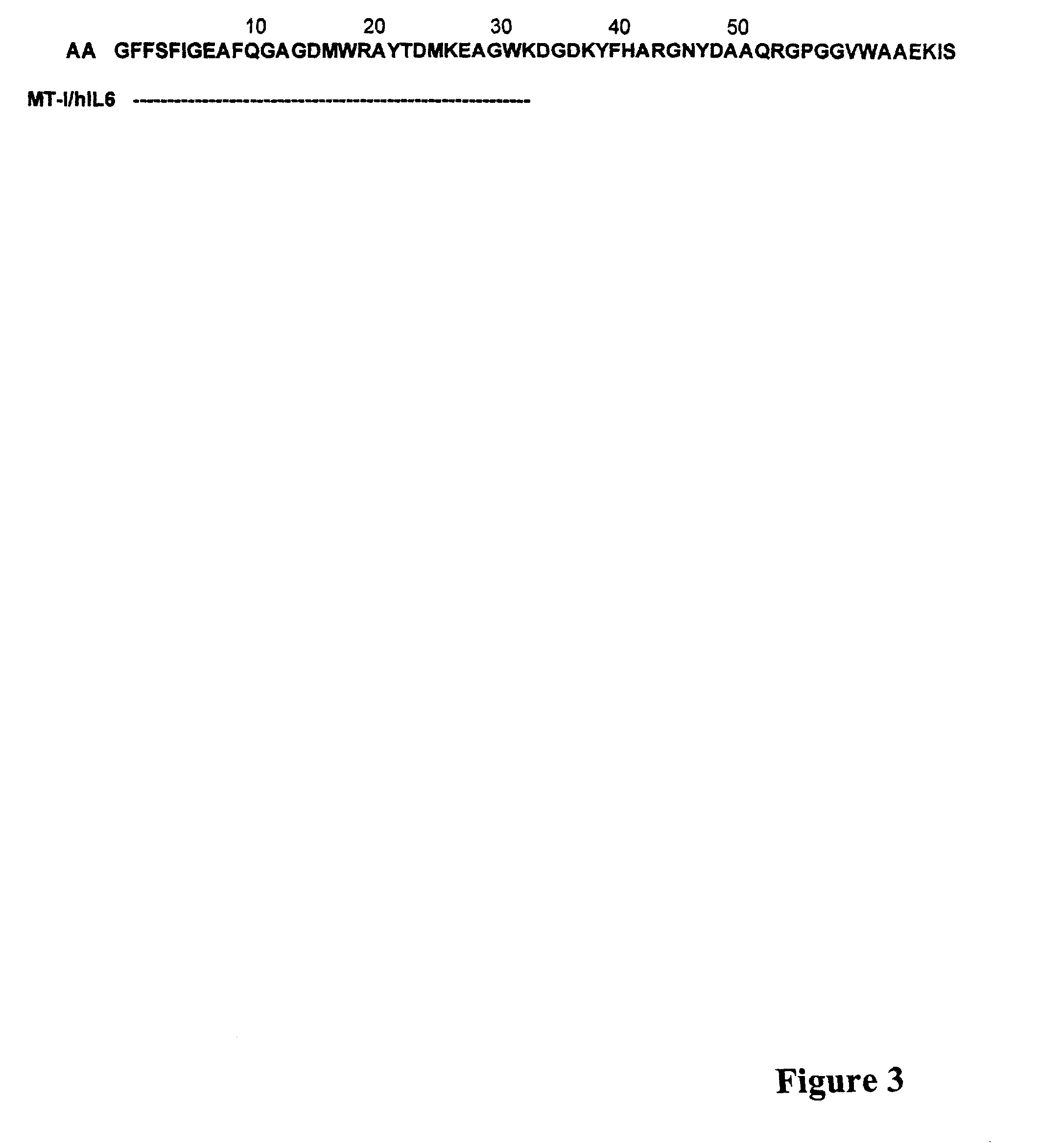Methods of investigating, diagnosing, and treating amyloidosis
a technology of amyloid fibril deposition and amyloid emulsifier, which is applied in the field diagnosis, can solve the problems of affecting the pathogenesis, affecting the treatment and prevention of amyloid fibril deposition, and affecting the survival rate of patients, and the usefulness of this model is limited
- Summary
- Abstract
- Description
- Claims
- Application Information
AI Technical Summary
Benefits of technology
Problems solved by technology
Method used
Image
Examples
Embodiment Construction
A. Transgenic Mouse Exhibiting AA Amyloidosis
1. Materials and Methods
[0110] Generation of Transgenic Animals
[0111] Transgenic mice carrying the hIL-6 cDNA under the control of the mouse MT-I promoter and E.mu. enhancer were generated as described by Fattori et al (1994). Briefly, a gel-purified 4.25 Kb PvuII-PvuII DNA fragment containing the hIL-6 cDNA was cloned downstream of the MT-I promoter and microinjected into the pronuclei of fertilized eggs of a cross Ft (C57BL / 6JXDBAII) mouse.
[0112] Southern Blot Analysis
[0113] Tail-derived DNA was isolated and digested with PvuII (New England Biolabs, Beverly, Mass.). Southern blots were performed (Sim et al., 1979) using a purified, labeled IL-6-specific DNA fragment as a probe. The blots were hybridized and washed under stringent conditions (65.degree. C., 0.1.times. SSC) and exposed to x-ray film overnight. Polymerase Chain Reaction (PCR)
[0114] Mice were genotyped for the presence of the transgene through analyses of the genomic DNA. I...
PUM
| Property | Measurement | Unit |
|---|---|---|
| Time | aaaaa | aaaaa |
| Time | aaaaa | aaaaa |
| Therapeutic | aaaaa | aaaaa |
Abstract
Description
Claims
Application Information
 Login to View More
Login to View More - R&D
- Intellectual Property
- Life Sciences
- Materials
- Tech Scout
- Unparalleled Data Quality
- Higher Quality Content
- 60% Fewer Hallucinations
Browse by: Latest US Patents, China's latest patents, Technical Efficacy Thesaurus, Application Domain, Technology Topic, Popular Technical Reports.
© 2025 PatSnap. All rights reserved.Legal|Privacy policy|Modern Slavery Act Transparency Statement|Sitemap|About US| Contact US: help@patsnap.com



